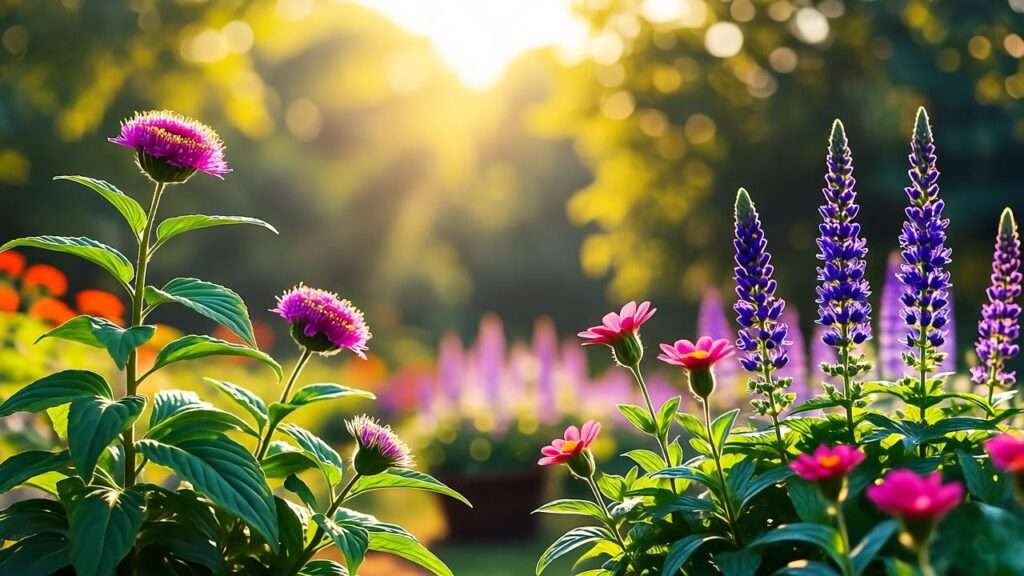Picture this: a garden glowing under the golden sun, bursting with vibrant colors and textures, where every plant thrives in the warm embrace of full sunlight. 🌞 If your yard basks in 6+ hours of direct sun daily, full sunshine plants are your ticket to a low-maintenance, dazzling outdoor space. As a horticulturist with over 15 years of experience in landscape design, I’ve seen firsthand how these sun-loving beauties can transform any garden into a radiant oasis. In this guide, you’ll discover 10 stunning full sunshine plants, expert care tips, and creative design ideas to elevate your garden game. Whether you’re a beginner or a seasoned gardener, this article will help you create a thriving, sun-soaked paradise. 🌿
What Are Full Sunshine Plants? 🌞
Full sunshine plants are species that flourish in at least 6 hours of direct sunlight daily, making them ideal for open, unshaded gardens or sunny patios. These plants are naturally adapted to intense light, offering vibrant blooms, lush foliage, and often drought tolerance—perfect for eco-conscious gardeners. Unlike shade-loving plants, full sun varieties thrive in bright conditions and require minimal fuss once established.
Why Choose Full Sunshine Plants? 🌸
- Aesthetic Appeal: Their bold colors and textures create eye-catching landscapes that shine all season long.
- Environmental Benefits: Many attract pollinators like bees, butterflies, and hummingbirds, supporting local ecosystems. 🐝
- Practicality: Perfect for sun-drenched climates or exposed areas where shade plants struggle.
- Common Misconception: Full sun doesn’t mean “no care.” While low-maintenance, these plants still need proper soil, water, and occasional pruning to thrive.
Top 10 Full Sunshine Plants for a Vibrant Garden 🌻
Below, I’ve curated a list of 10 full sunshine plants based on their beauty, resilience, and adaptability across various climates (with USDA zones for reference). Each includes detailed care tips and design ideas to inspire your garden transformation.
1. Lavender (Lavandula angustifolia) 💜
- Description: Known for its fragrant purple blooms and silvery-green foliage, lavender is a sun-loving staple for borders and herb gardens. Its soothing scent and delicate appearance make it a gardener’s favorite.
- Care Tips:
- Soil: Well-drained, slightly alkaline soil (pH 6.5–7.5) is key.
- Water: Low; water sparingly once established, as lavender is drought-tolerant.
- Pruning: Trim after flowering to maintain shape and encourage next season’s blooms.
- Design Idea: Pair lavender with white roses or ornamental grasses for a romantic, Mediterranean-inspired garden.
- USDA Zones: 5–9.
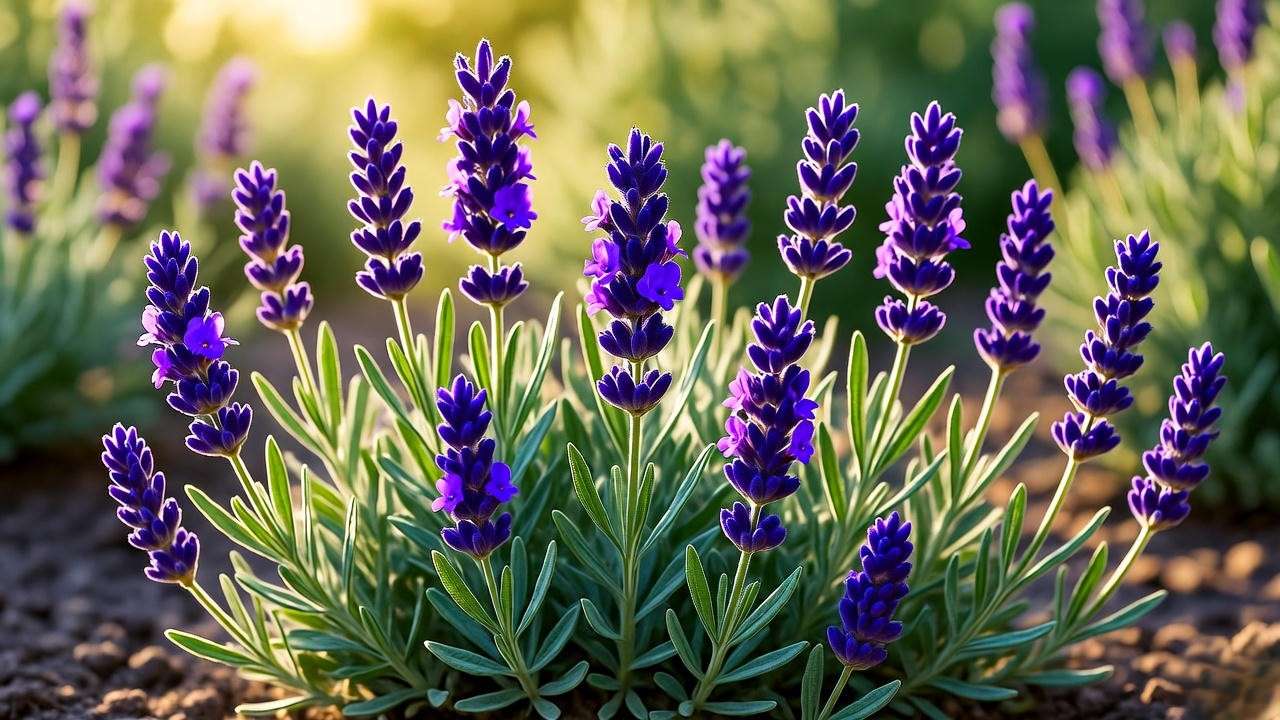
2. Sunflower (Helianthus annuus) 🌻
- Description: Nothing says “sunshine” like sunflowers, with their cheerful, golden petals and towering heights (up to 12 feet!). These iconic blooms follow the sun, adding drama to any garden.
- Care Tips:
- Soil: Fertile, well-drained soil supports vigorous growth.
- Water: Moderate; keep soil moist but avoid waterlogging.
- Support: Stake taller varieties to prevent toppling in windy conditions.
- Design Idea: Create a “sunflower maze” for kids or use as a vibrant backdrop for shorter plants.
- USDA Zones: 2–11.
3. Black-Eyed Susan (Rudbeckia hirta) 🌼
- Description: With golden-yellow petals and dark centers, black-eyed Susans are pollinator magnets that bloom from summer to fall.
- Care Tips:
- Soil: Tolerates poor soils but prefers well-drained conditions.
- Water: Moderate; drought-tolerant once established.
- Deadheading: Remove spent blooms to extend flowering.
- Design Idea: Mass plant for a meadow-like effect or combine with coneflowers for a colorful display.
- USDA Zones: 3–9.
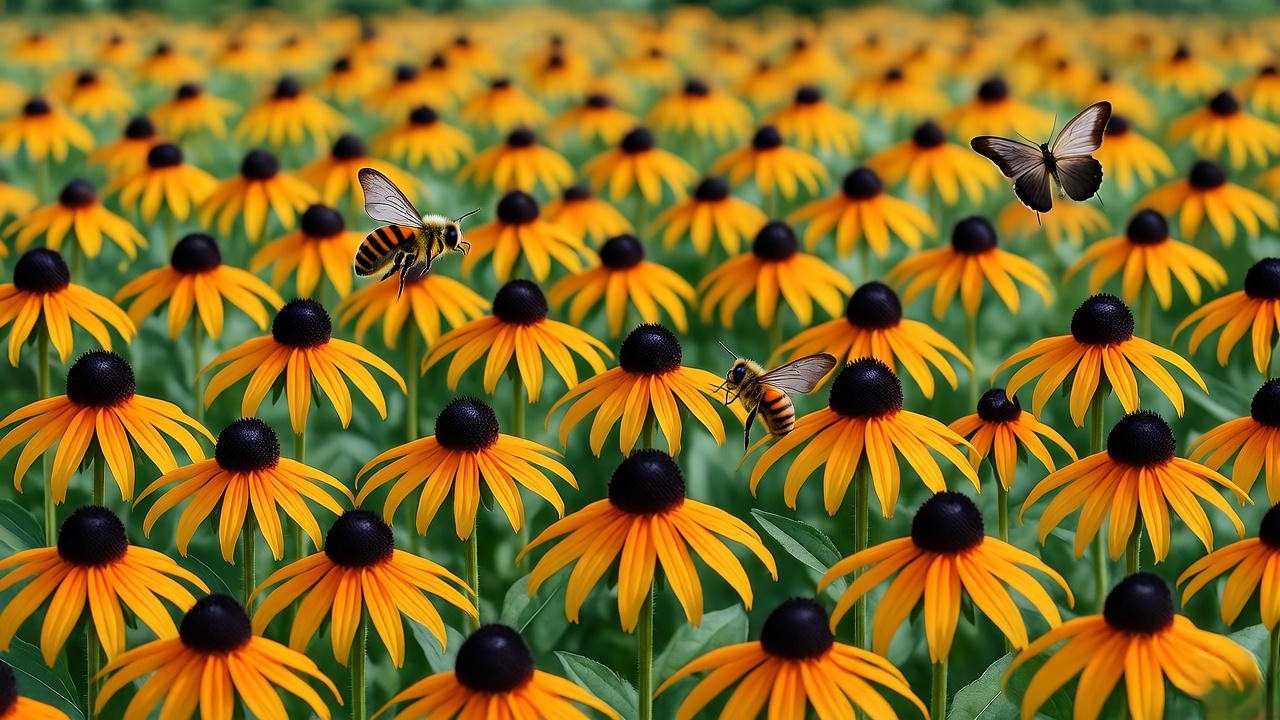
4. Salvia (Salvia nemorosa) 🌸
- Description: Spiky blooms in vibrant purples, blues, and reds make salvia a standout in sunny gardens. Its long bloom time adds consistent color.
- Care Tips:
- Soil: Well-drained, loamy soil for best results.
- Water: Low to moderate; avoid overwatering.
- Pruning: Cut back in spring to promote bushier growth.
- Design Idea: Mix with ornamental grasses for a textured, modern look.
- USDA Zones: 4–8.
5. Coneflower (Echinacea purpurea) 🌷
- Description: These daisy-like flowers in purples, pinks, and whites are beloved by butterflies and gardeners alike for their resilience and charm.
- Care Tips:
- Soil: Adapts to clay or well-drained soils.
- Water: Moderate; drought-resistant once established.
- Division: Divide every 3–4 years to maintain vigor.
- Design Idea: Pair with daylilies in mixed borders for a vibrant, pollinator-friendly display.
- USDA Zones: 3–8.
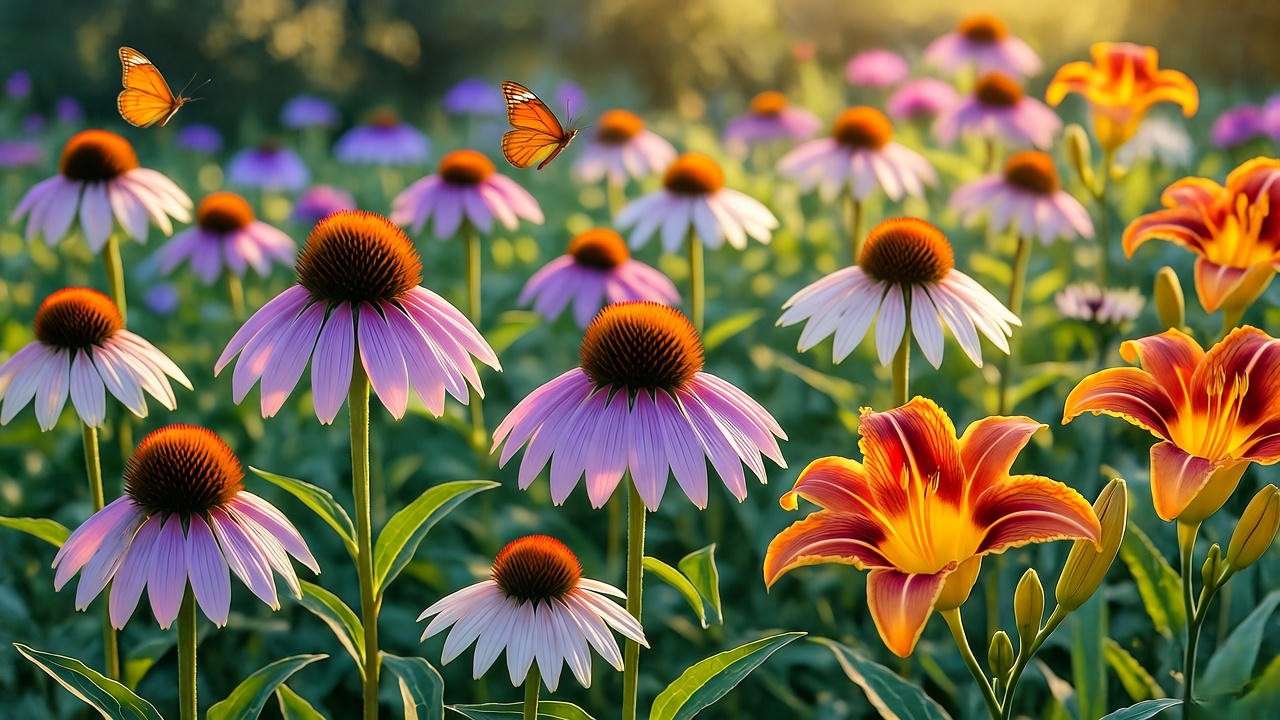
6. Daylily (Hemerocallis spp.) 🌺
- Description: Daylilies offer prolific blooms in a rainbow of colors, with each flower lasting a day but new ones opening daily.
- Care Tips:
- Soil: Highly adaptable, prefers well-drained.
- Water: Moderate; tolerates dry spells.
- Maintenance: Remove spent blooms to encourage continuous flowering.
- Design Idea: Line walkways or use in containers for a colorful, low-maintenance accent.
- USDA Zones: 3–9.
7. Yarrow (Achillea millefolium) 🌾
- Description: Feathery foliage and flat-topped flower clusters in whites, pinks, and yellows make yarrow a versatile sun-lover.
- Care Tips:
- Soil: Poor to average, well-drained soil.
- Water: Low; highly drought-tolerant.
- Pruning: Cut back after flowering to encourage reblooming.
- Design Idea: Use in rock gardens or as a ground cover for a rugged, sunny aesthetic.
- USDA Zones: 3–9.
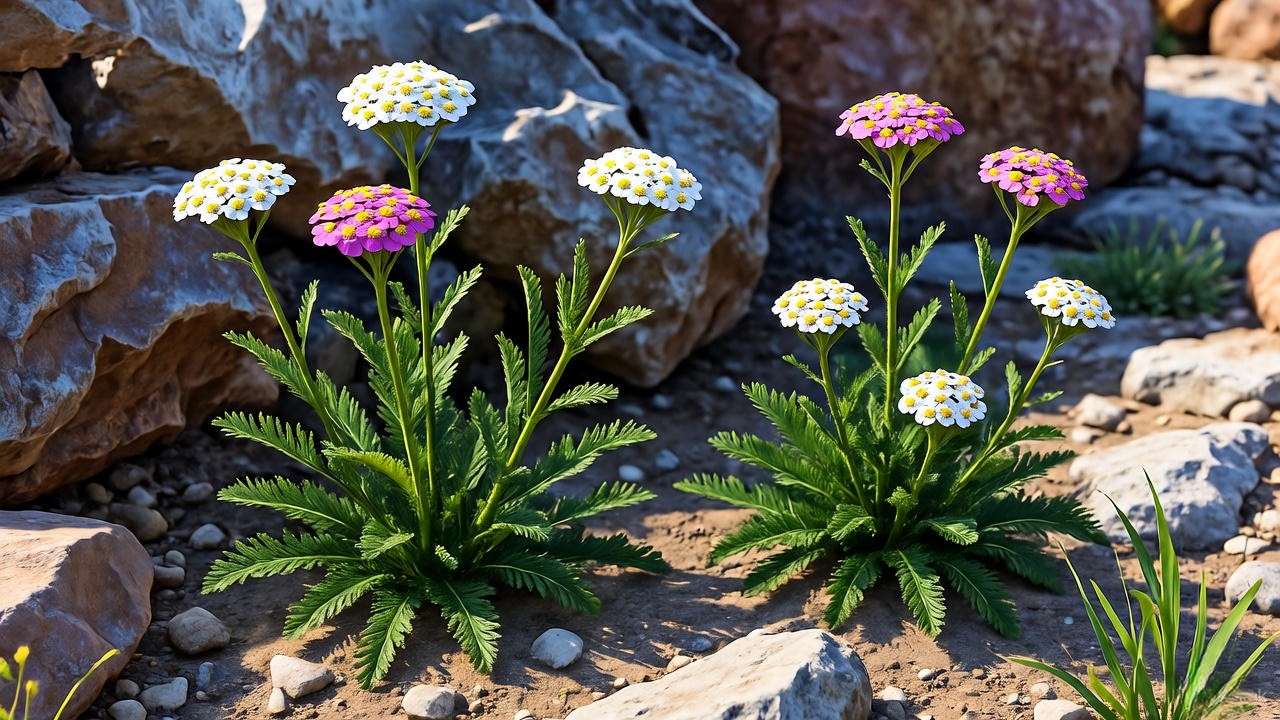
8. Russian Sage (Perovskia atriplicifolia) 💙
- Description: Airy, lavender-blue spikes and silvery foliage create a soft, elegant look in sunny gardens.
- Care Tips:
- Soil: Well-drained, sandy or loamy soil.
- Water: Low; drought-tolerant once established.
- Pruning: Cut back in spring to promote new growth.
- Design Idea: Pair with roses or coneflowers for a soft, romantic vibe.
- USDA Zones: 5–9.
9. Blanket Flower (Gaillardia spp.) 🌹
- Description: Bold red and yellow daisy-like blooms offer a long flowering season, perfect for sunny borders.
- Care Tips:
- Soil: Well-drained, tolerates poor soils.
- Water: Low; drought-tolerant.
- Deadheading: Prolongs blooming season.
- Design Idea: Use in cottage gardens or mixed borders for a rustic, colorful charm.
- USDA Zones: 3–10.
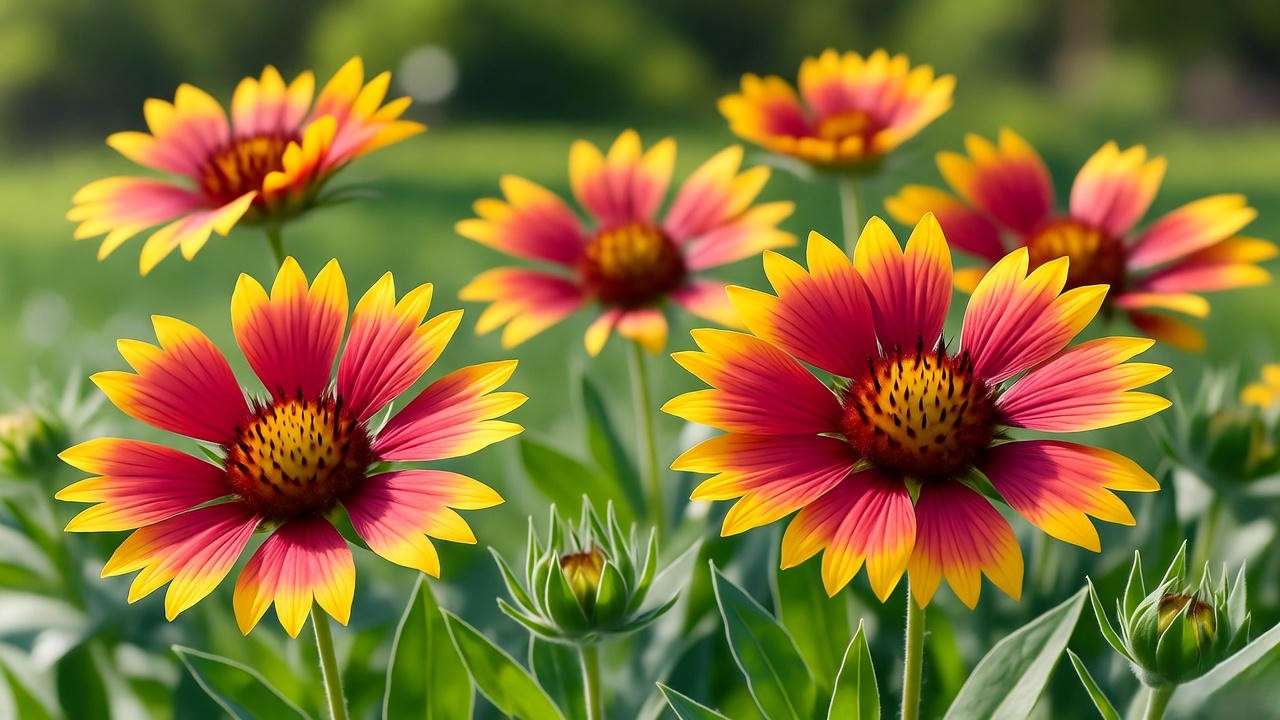
10. Sedum (Sedum spectabile) 🌵
- Description: Succulent foliage with star-shaped flower clusters in pinks and reds, ideal for low-maintenance gardens.
- Care Tips:
- Soil: Well-drained, sandy or gravelly.
- Water: Low; highly drought-tolerant.
- Maintenance: Divide every few years for vigor.
- Design Idea: Perfect for xeriscaping or sunny rockeries.
- USDA Zones: 3–9.
How to Care for Full Sunshine Plants: Expert Tips 🌞
To ensure your full sunshine plants thrive, follow these expert-backed care strategies:
- Soil Preparation: Well-drained soil is critical for most sun-loving plants. Test your soil’s drainage by digging a 12-inch hole, filling it with water, and timing how long it takes to drain (ideally under 2 hours). Amend with sand or compost if needed. 🏡
- Watering Strategies: Most full sunshine plants are drought-tolerant but need regular watering during their first season to establish roots. Once established, water deeply but infrequently to encourage strong root systems.
- Sun Exposure: Use a sun calculator app or observe your garden over a day to confirm 6+ hours of direct sunlight. Avoid planting near tall structures that cast shadows. ☀️
- Fertilization: Use a balanced, slow-release fertilizer (e.g., 10-10-10) sparingly in spring. Over-fertilizing can lead to weak growth or fewer blooms.
- Pest and Disease Management: Watch for aphids or powdery mildew. Use organic solutions like neem oil or insecticidal soap for eco-friendly control. 🐞
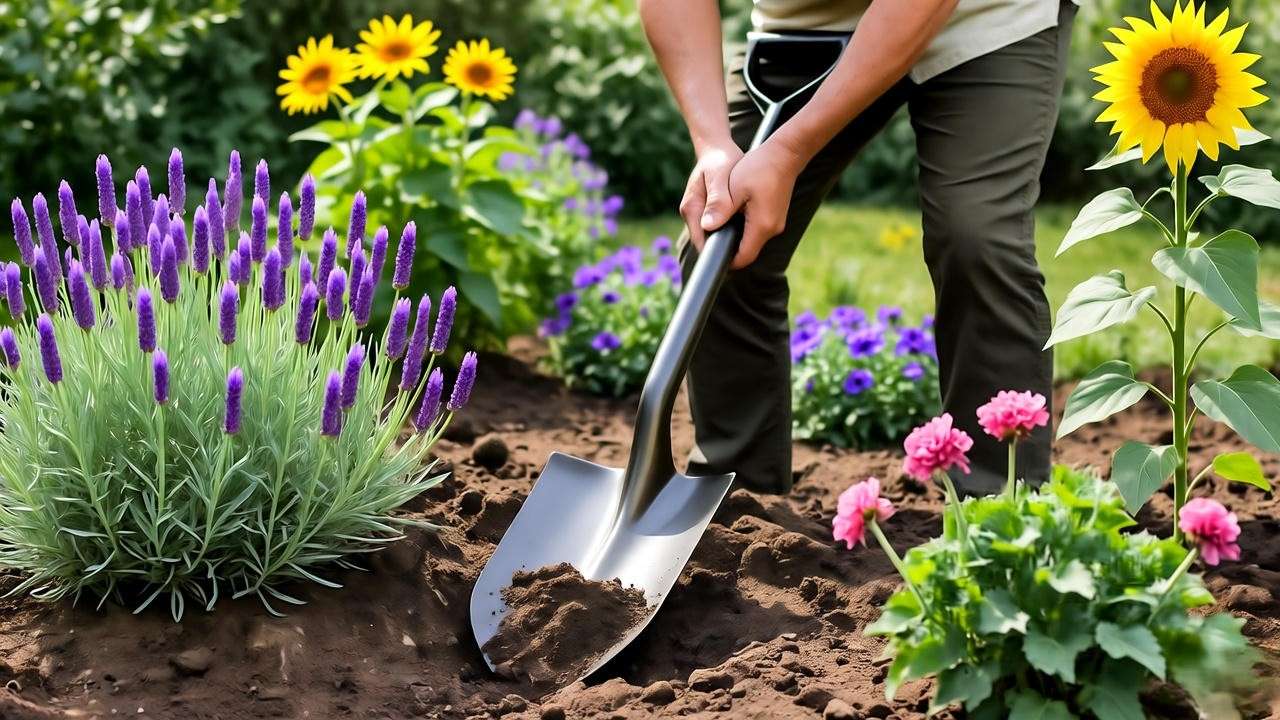
Seasonal Care Guide 📅
- Spring: Plant new additions, prune perennials like lavender and Russian sage, and prepare soil with compost.
- Summer: Water consistently for new plants, deadhead to extend blooms, and monitor for pests.
- Fall: Mulch around perennials to protect roots and divide overcrowded plants like coneflowers.
- Winter: In colder zones, cover tender plants with burlap or mulch to insulate against frost.
Designing a Sun-Loving Garden: Inspiration and Ideas 🌿
Transform your sunny space with these design tips:
- Layout Tips: Use taller plants like sunflowers as focal points in the back of borders, with shorter plants like sedum or yarrow in front.
- Color Schemes: Combine complementary colors, such as purple lavender with yellow black-eyed Susans, for a vibrant palette.
- Pollinator-Friendly Designs: Incorporate salvia, coneflowers, and black-eyed Susans to attract bees, butterflies, and hummingbirds. 🦋
- Case Study: In my work with a client in USDA Zone 7, we transformed a barren, sunny yard into a pollinator haven using mass plantings of coneflowers and blanket flowers, accented with Russian sage for height and texture.
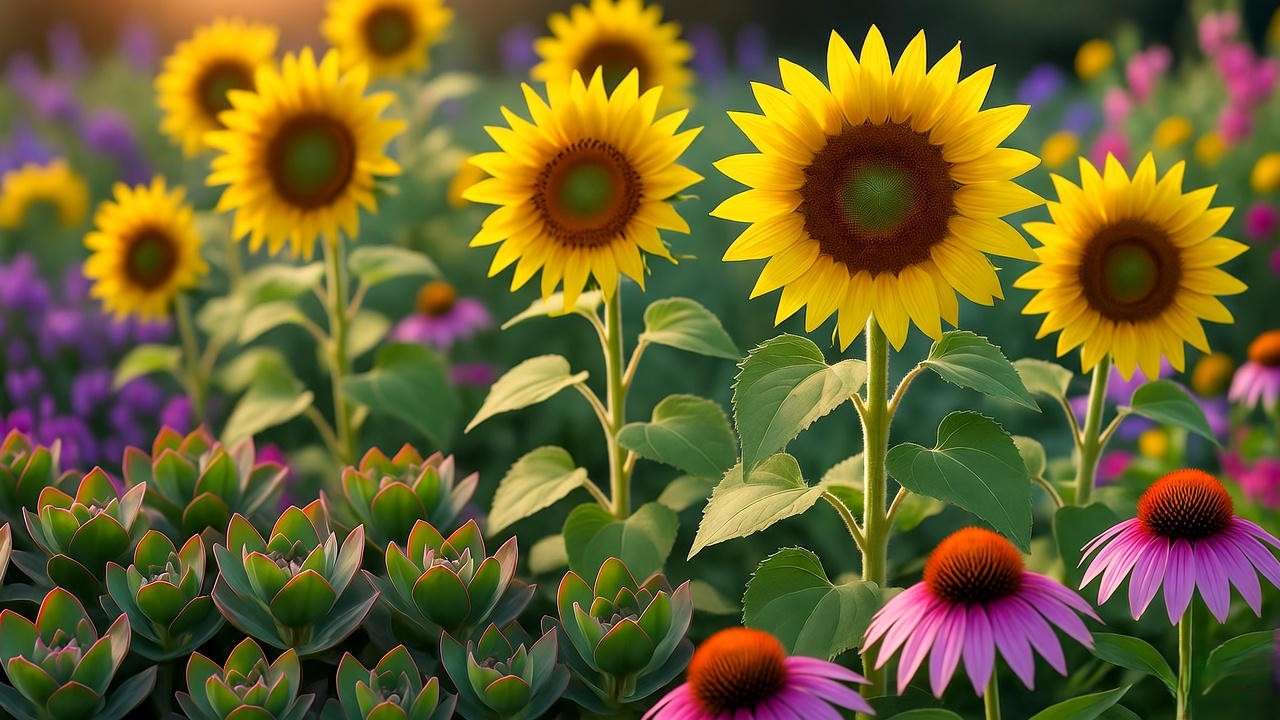
Common Mistakes to Avoid with Full Sunshine Plants 🚫
To ensure your sun-loving garden thrives, steer clear of these common pitfalls:
- Overwatering: Many full sunshine plants, like lavender and sedum, are drought-tolerant and prone to root rot if overwatered. Check soil moisture before watering—stick your finger an inch into the soil; if it’s dry, water deeply. 💧
- Poor Plant Placement: Not all sun-loving plants suit every climate. Always check your USDA zone (use the USDA Plant Hardiness Zone Map) to ensure compatibility. For example, lavender struggles in humid Zone 10 climates.
- Neglecting Soil: Poor drainage can kill even the toughest sun-loving plants. Test your soil’s drainage and amend with sand or gravel if it holds water too long.
- Ignoring Pruning: Skipping pruning on plants like salvia or Russian sage can lead to leggy growth and fewer blooms. Regular trimming encourages bushier, healthier plants.
- Planting Too Close: Crowding sun-loving plants reduces air circulation, increasing disease risk. Follow spacing guidelines (e.g., 18–24 inches for coneflowers) for optimal growth.
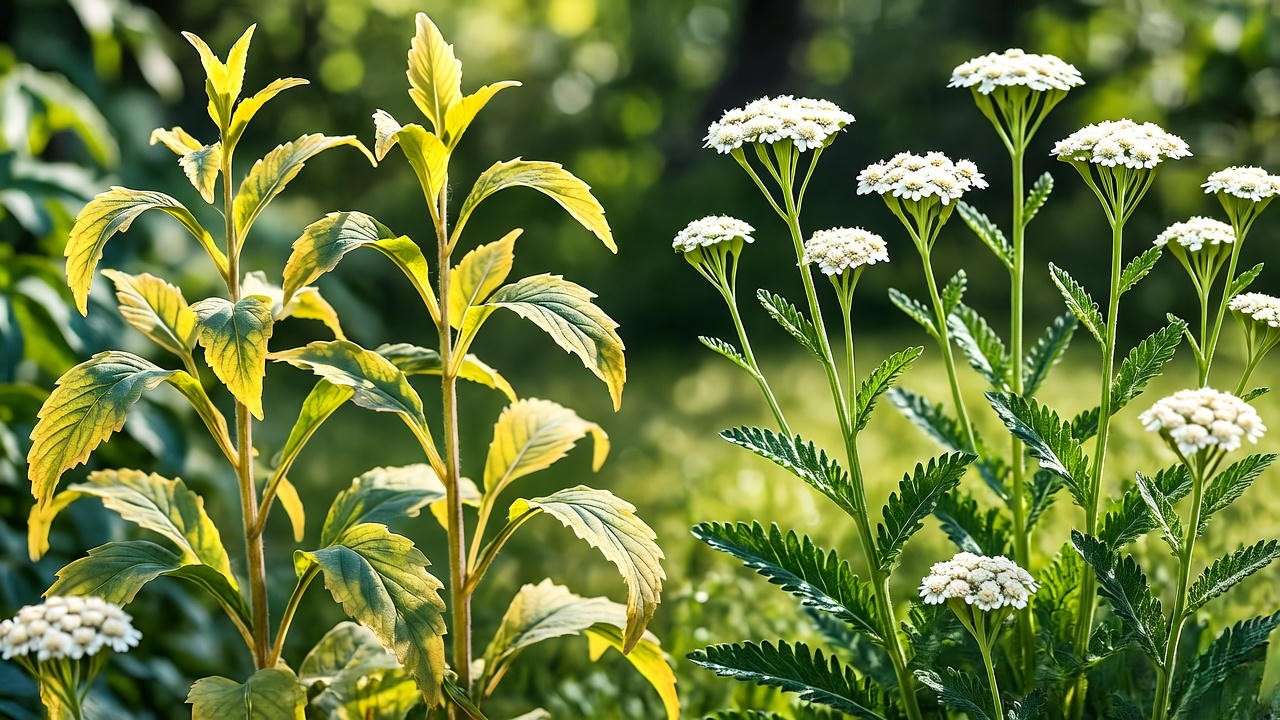
FAQs About Full Sunshine Plants ❓
Here are answers to common questions gardeners ask about full sunshine plants, addressing their needs and curiosities:
- What’s the difference between full sun and partial sun plants?
Full sun plants need 6+ hours of direct sunlight daily, while partial sun plants thrive with 3–6 hours. For example, sunflowers are full sun, while hostas prefer partial sun. - Can full sunshine plants grow in containers?
Absolutely! Plants like daylilies and blanket flowers do well in pots, provided they have well-drained soil and receive enough sunlight. Use large containers to accommodate root growth. - How do I know if my garden gets enough sun?
Observe your garden throughout the day or use a sun calculator app to track sunlight hours. A spot with 6+ hours of unobstructed sun qualifies as full sun. - Which full sunshine plants are best for beginners?
Black-eyed Susans, yarrow, and sedum are excellent choices due to their low maintenance and forgiving nature. - Are full sunshine plants drought-tolerant?
Most, like lavender, yarrow, and sedum, are highly drought-tolerant once established, making them ideal for water-conscious gardeners.
Conclusion: Create Your Dream Sunlit Garden 🌞
Full sunshine plants are the key to transforming your sun-drenched yard into a vibrant, low-maintenance oasis. From the fragrant blooms of lavender to the bold cheer of sunflowers, these 10 plants offer beauty, resilience, and pollinator-friendly benefits. By following the expert care tips and design ideas in this guide, you can create a garden that thrives under the sun’s warm rays. Start small—pick one or two plants from this list, assess your garden’s sunlight, and watch your space come alive with color and life. 🌸 Visit your local nursery for zone-specific advice, and don’t forget to share your garden transformation with us using #SunshineGardenOasis! 📸
As a horticulturist with over 15 years of experience, I’ve seen these plants bring joy to countless gardens. With the right care and creativity, your sunny space can become a haven for beauty and biodiversity. Happy gardening! 🌻

